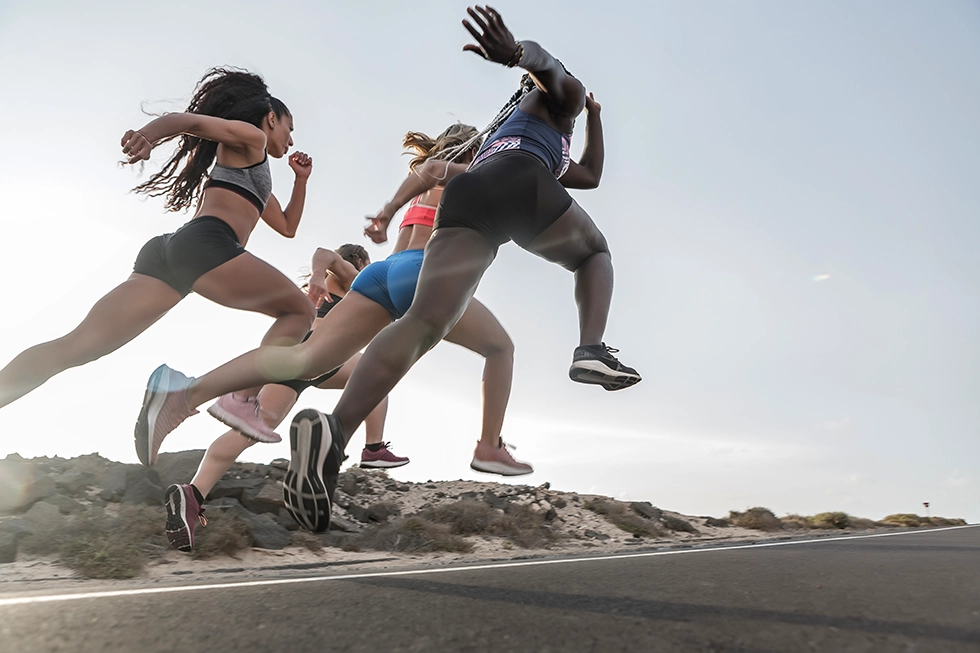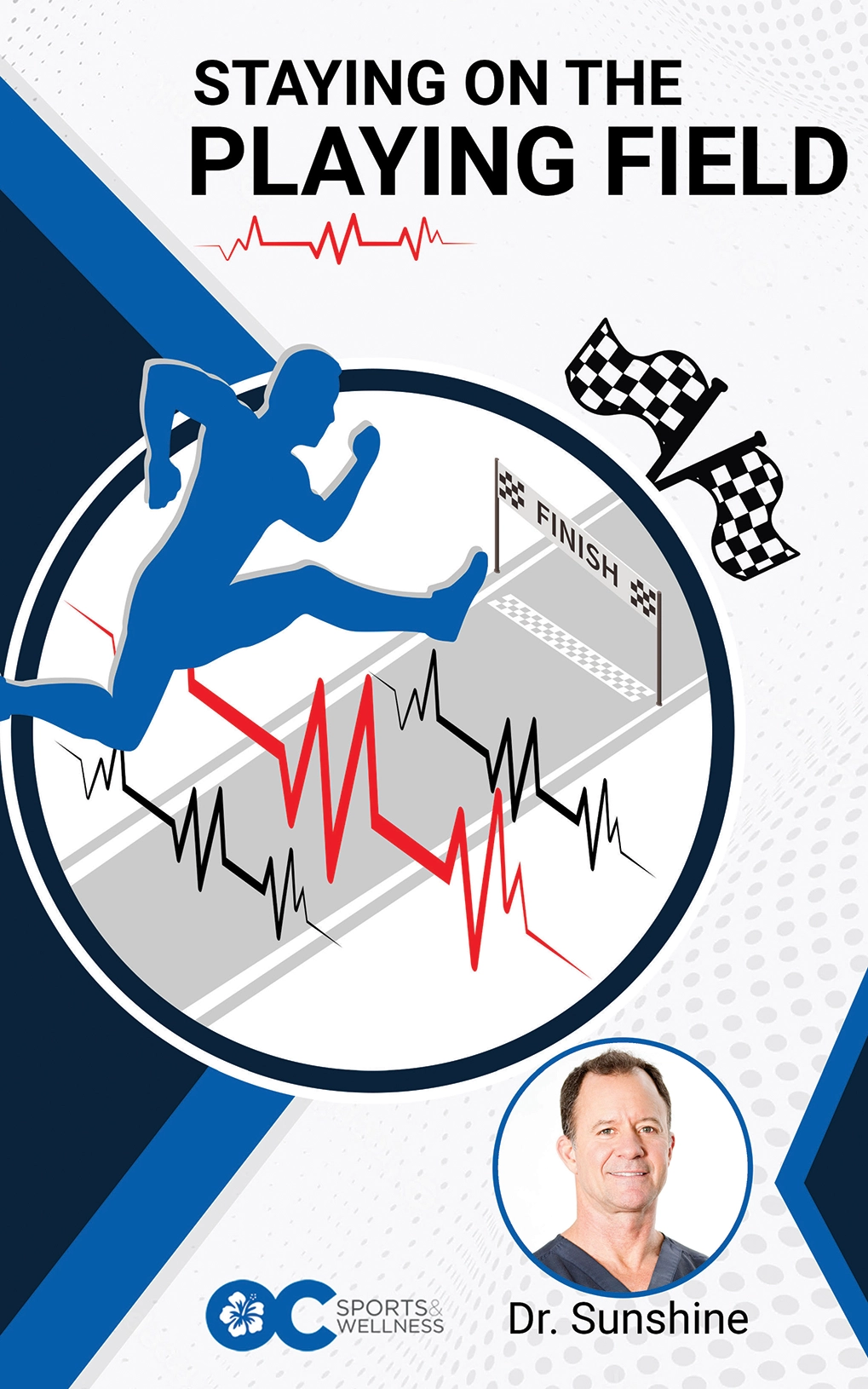Sports medicine has always been at the forefront of innovative healthcare, constantly evolving to meet the needs of athletes at all levels. With rapid advancements in technology and a deeper understanding of human physiology, the future of sports medicine promises to be even more transformative. In addition to the regenerative sports medicine and therapies we offer at OC Sports and Wellness, below are some emerging trends and technologies to revolutionize the field.
Regenerative Sports Medicine and Therapies
One of the most exciting advancements in sports medicine is the rise of regenerative therapies. These treatments aim to repair or replace damaged tissues, significantly reducing recovery times and enhancing healing.
- Hyaluronic acid (HA) is essential for maintaining joint lubrication and overall tissue health. It effectively treats osteoarthritis and other joint-related conditions, offering significant pain relief and improved joint function.
- Platelet-rich plasma (PRP) Therapy involves injecting a concentration of a patient’s platelets to accelerate the healing of injured tendons, ligaments, muscles, and joints. It is increasingly used for treating chronic conditions such as tennis elbow and acute injuries like ligament sprains.
- Prolotherapy involves injecting a solution, typically containing dextrose (a type of sugar), into damaged or weakened areas such as ligaments, tendons, or joints, which aims to treat musculoskeletal pain and injuries by stimulating the body’s natural healing processes.
- Prolozone Therapy combines ozone therapy with prolotherapy to stimulate tissue repair and regeneration. It is used for musculoskeletal conditions, including joint pain and chronic injuries.
- Perineural Injection Therapy (PIT) involves injecting a dextrose (a type of sugar) solution, often combined with a local anesthetic, around peripheral nerves that are responsible for pain. The treatment aims to reduce neurogenic inflammation, a condition where nerves become inflamed and hypersensitive, leading to chronic pain.
Telemedicine and Remote Monitoring
The COVID-19 pandemic has accelerated the adoption of telemedicine, and its benefits are now well-recognized in sports medicine.
- Remote Consultations: Athletes can consult with specialists from anywhere in the world, receiving expert advice without needing travel. This is particularly beneficial for those in remote areas or with busy schedules.
- Remote Monitoring: Wearable devices enable continuous monitoring of athletes’ health metrics. Medical professionals can track recovery progress, adjust treatment plans, and intervene early if issues arise.
Wearable Technology and Data Analytics
Wearable technology is transforming how athletes train, perform, and recover. These devices provide real-time data that can be used to optimize performance and prevent injuries.
- Fitness Trackers and Smartwatches: Devices like Fitbit and Apple Watch track vital signs, activity levels, and sleep patterns, offering valuable insights into an athlete’s overall health and readiness for training.
-
Continuous Glucose Monitoring (CGM): This type of device tracks glucose (sugar) levels in the blood continuously throughout the day and night. It helps people, especially those with diabetes, manage their blood sugar levels more effectively by providing real-time data and trends.
-
Oura Ring: This is a wearable device designed to monitor sleep patterns. It tracks various metrics such as heart rate, body temperature, and movement to provide insights into sleep quality and overall health.
-
HeartMath: This device measures heart rate variability (HRV), which is an indicator of the balance between the sympathetic and parasympathetic nervous systems. HeartMath devices also offer biofeedback to help users achieve a state of “coherence,” a harmonious state of heart, mind, and emotions. This can improve emotional well-being and reduce stress.
- Smart Clothing: Embedded with sensors, smart clothing can monitor muscle activity, heart rate, and other physiological parameters. This data helps in designing personalized training programs and identifying potential injury risks.
- Data Analytics: Advanced data analytics can process the vast amounts of data collected from wearables, providing coaches and medical professionals with actionable insights. Predictive analytics can identify trends and patterns that could lead to injuries, allowing for proactive interventions.
Artificial Intelligence and Machine Learning
AI and machine learning are making significant inroads into sports medicine, offering new ways to diagnose, treat, and prevent injuries.
- Injury Prediction and Prevention: Machine learning algorithms can analyze data from various sources, including wearables and medical records, to predict the likelihood of injuries. This allows for tailored training programs and preventive measures to be implemented.
- Diagnostic Imaging: AI-powered imaging tools can enhance the accuracy of diagnoses. For instance, AI algorithms can analyze MRI scans to detect subtle changes in tissues that might be missed by the human eye.
- Personalized Treatment Plans: AI can help create personalized rehabilitation programs by considering an individual’s unique physiology, injury history, and recovery progress.
Virtual Reality (VR) and Augmented Reality (AR)
VR and AR technologies are integrated into sports medicine to enhance training, rehabilitation, and education.
- Rehabilitation: VR can create immersive environments for rehabilitation exercises, making the process more engaging and effective. Patients can perform movements in a virtual setting that mimics real-life scenarios, aiding faster recovery.
- Training Simulations: AR can overlay digital information onto the real world, giving athletes real-time feedback on their technique and form. This can be particularly useful in sports like golf or baseball, where precision is crucial.
- Education and Training: VR and AR can train medical professionals by simulating complex surgical procedures and anatomical models, improving their skills and knowledge.
Genomic Medicine and Personalized Health
Understanding an individual’s genetic makeup can provide insights into their risk of injuries, optimal training regimes, and recovery strategies.
- Genetic Testing: By analyzing an athlete’s DNA, genetic testing can identify predispositions to specific injuries and conditions. This information can be used to tailor training programs and preventive measures.
- Epigenetics: Beyond genetics, epigenetics studies how lifestyle and environmental factors affect gene expression. This field holds promise for developing personalized health strategies that consider genetic and epigenetic factors.
The future of sports medicine is bright, with emerging trends and technologies set to redefine how we approach athlete care. From regenerative therapies and wearable tech to AI and VR, these advancements promise to enhance performance, speed up recovery, and prevent injuries. As we continue to push the boundaries of what’s possible, the ultimate goal of OC Sports and Wellness remains: helping athletes achieve their peak potential while maintaining optimal health.
We hope this information is helpful. At OC Sports and Wellness in Orange County, we understand the importance of balancing your health amidst a busy lifestyle. We offer convenient options for scheduling visits, texting, or video chatting with Dr. Sunshine. Let’s work towards your well-being! We invite you to reach out: 949-460-9111



